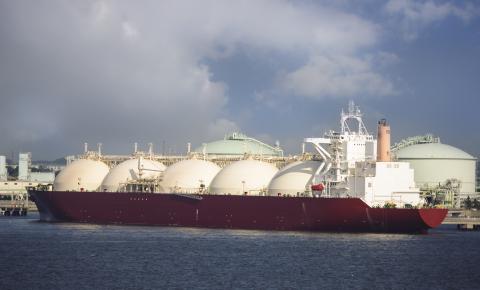South African coal exports face long-term decline
SYDNEY–In 2018, coal exports out of Richards Bay Coal Terminal (RBCT), South Africa’s main coal export port, declined 4% to 73.5 million tonnes (Mt). According to RBCT CEO Alan Waller, the decline was not due to operational issues but a matter of weaker global demand. This decline occurred despite the main off-taker of South African coal, India (which received 48% of RBCT exports), having an unusually strong year for coal imports in 2018.
The South African coal industry however remains optimistic about the long-term future of the nation’s exports. Rail freight company Transnet is intending to expand rail capacity to Richards Bay to 97.5 million tonnes per annum (Mtpa) despite RBCT failing to meet its target of 77Mt in 2018.
This plan seems optimistic to say the least. In 2018 IEEFA published an analysis of the long-term future of Australia’s thermal coal exports which highlighted there is already excess capacity at the world’s largest coal export terminal in Newcastle. This pressure will only increase as Asian imported coal demand declines into the future.
Before South Africa became reliant on Asian off-takers, most of its exports went to Europe. With Germany now adding its name to the list of European countries committed to phasing out coal, the 7Mt of coal that left RBCT for Europe in 2018 looks set to decline further.
With almost half of RBCT’s exports going to India, the future of South African coal exports is inextricably linked to the future of the Indian power generation market which is undergoing an unprecedented energy transformation.
During the nine months through December 2018, India installed 40 times more renewable energy capacity than thermal power capacity. Net thermal power installs reached only 120 megawatts (MW) over this period as coal plant closures almost matched new installations. India’s National Electricity Plan accepts that renewable energy will be responsible for the great majority of new capacity additions out to 2027.
Electricity demand is still growing fast in India hence the unexpected, sudden decline in net coal-fired power plant additions will see coal plant utilisation rates increase from current unsustainably low levels. However, it is the intention of the Indian government that any increased coal demand be fulfilled by domestic coal in the long term.
This makes all the more sense given the financial plight of Indian thermal plants that use imported coal. The unexpectedly high cost of coal imports has left around 10 gigawatts (GW) of coal power plants on India’s west coast unviable and in need of a bailout that will see consumers burdened with higher tariffs and bad debt write-offs for the major Indian banks.
India is one of the nations globally that is most dependent on fossil fuel imports, which is a major energy security headache for the Indian government. Domestic coal production is increasing and the government remains committed to reducing thermal coal imports.
Neighbouring Pakistan was the destination of almost 13% of 2018 exports from RBCT, making it the second largest export destination. A Chinese-financed program of coal-fired power development in Pakistan means this nation is seen as a key growth market for the coal industry.
It seems increasingly likely that this growth will end up being disappointing to the coal export industry.
In December 2018, IEEFA published a report that concluded a rapid increase in the utilisation of Pakistan’s excellent renewable energy resources is entirely achievable, modelling almost 30% of generation coming from wind and solar by 2030.
Furthermore, there is increasing anxiety about the burden of fossil fuel imports on the nation’s fragile economy. In December 2018, the Energy Minister of Pakistan’s Punjab province expressed a wish to convert the newly built Sahiwal coal power plant from imported to domestic coal.
This was followed in January 2019 with the announcement that the Rahim Yar Khan imported-coal-fired power proposal had been cancelled. The same month, Pakistan’s federal Power Minister hinted at the country’s new, upcoming renewable energy policy, suggesting there would be significantly increased commitment to renewables.
RBCT’s third largest export destination was South Korea, a nation that has a long-term plan to move away from coal-fired and nuclear power generation towards LNG and renewables.
South Korea’s total coal imports from South Africa declined 5.5% in 2018. The South Korean government aims to encourage a switch from coal to LNG and renewables with significantly increased taxes on coal imports. In addition, South Chungcheong province, home to around half of South Korea’s coal-fired power plants, is intending to move away from coal even faster. The province is already a member of the Powering Past Coal Alliance – a global alliance of governments, businesses and organisations transitioning away from coal.
Other nations with potential coal demand growth may also disappoint the South African coal export industry.
Bangladesh’s largely Chinese-financed coal-fired power build-out is badly delayed. Meanwhile, a China-backed coal-fired power proposal for Kenya continues to face strong local opposition as new energy technology makes inroads. And China’s plan to build a huge, 6.6GW coal plant in Egypt for just $4.4bn looks hopelessly optimistic given South Africa’s badly delayed Medupi and Kusile coal-fired power stations (both 4.8GW) are expected to cost more than US$20bn combined.
A 2019 IEEFA report highlighted China’s determination to push its coal-fired power construction capacity onto other developing Asian and African nations now that opportunities to build coal plants at home are drying up.
Just how long China can get away with this before developing nations recognise the financial, environmental and social advantages of renewable energy remains to be seen.
Southeast Asia is often highlighted as a major growth area for coal demand but the continuing advance of renewable energy calls this into significant question. In any case, South African coal exporters are likely to find very strong competition from Australian and Indonesian exporters in this region, especially as those countries start seeing import demand decline in North Asia.
With the global energy transition well underway, South African coal’s major export markets set to decline or disappoint, and domestic offtake opportunities in the long term made all the more uncertain by state-owned utility Eskom’s severe financial stress, a more realistic view of the future is required.
As RBCT Chair Nosipho Siwisa-Damasane stated upon the release of the 2018 export figures, “The markets are a reality, they are outside RBCT’s control”.
This is quite correct. The South African coal export industry will be unable to arrest the long-term decline of coal and it needs to be prepared for its own transition.
Simon Nicholas ([email protected]) is an IEEFA energy finance analyst.
Related links:
IEEFA Guest Commentary: The Sensible Path Forward for South Africa’s Eskom















